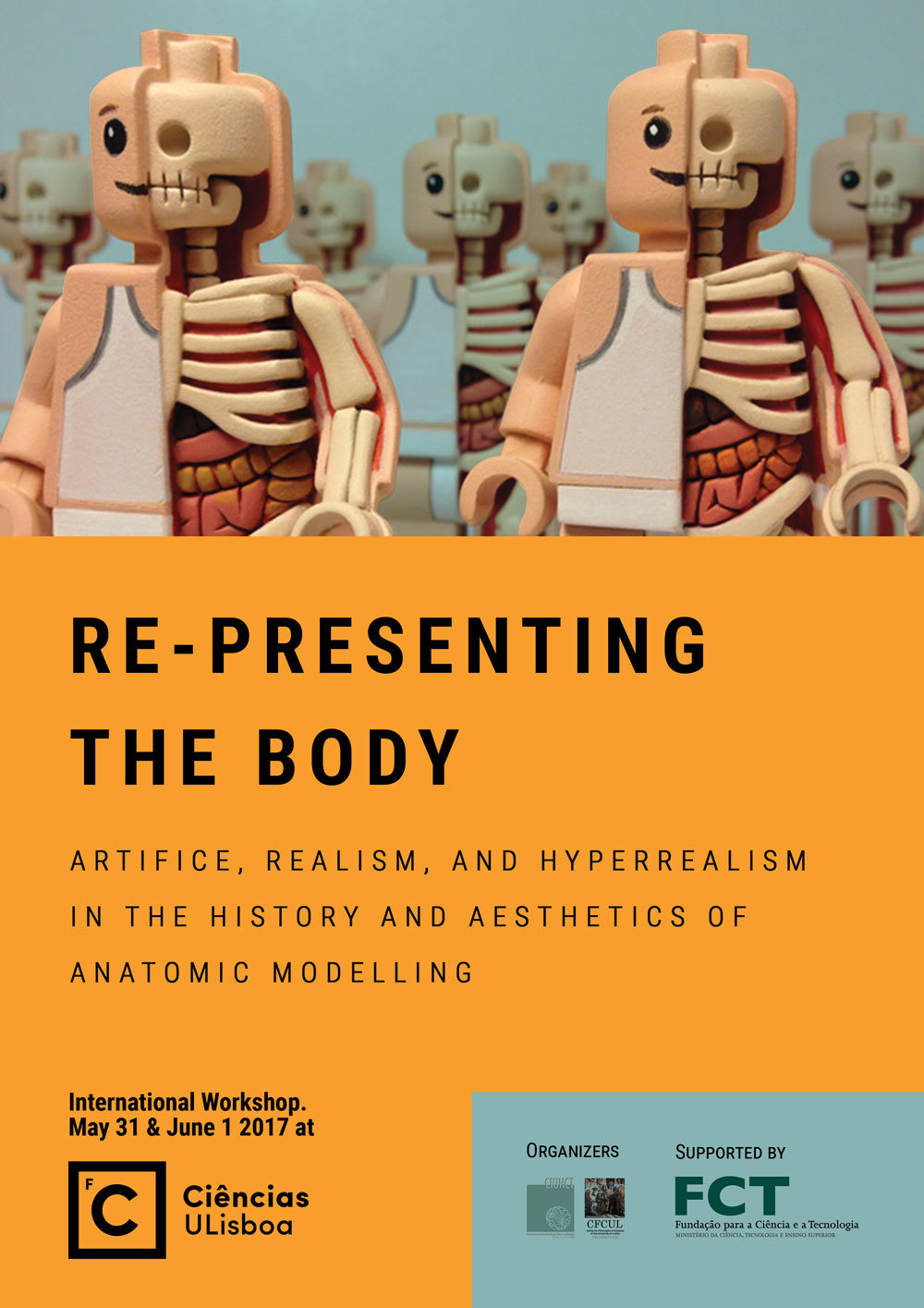Meetings
Re-Presenting the Body: Artifice, Realism and Hyperrealism in the History and Aesthetics of Anatomic Modelling
Faculdade de Ciências da Universidade de Lisboa, Edifício C8, Sala 8.2.13
31 May to 01 June 2017
 Descarregar panfleto A4 (1.5mb) (pdf / 1,511.27 KB)
Descarregar panfleto A4 (1.5mb) (pdf / 1,511.27 KB)
Apresentação
Este workshop pretende reunir especialistas de diferentes campos disciplinares para responder a algumas perguntas fundamentais sobre a história do modelo anatómico (3D): o que é um modelo? Quem o produz? Para que serve? Como é que muda? Qual a sua relação com a realidade? A organização está a cargo de Teresa Salomé Mota (CIUHCT) e Pietro Conte (Centro de Filosofia das Ciências da Universidade de Lisboa). A entrada é livre.
Programa
31 de Maio — Sessão de tarde
- 15:00 Francesco Paolo De Ceglia (Università degli Studi di Bari), Re-create the Body to Recreate the Spirit. The Fantastic Anatomy of Raimondo de Sangro Prince of Sansevero
- 15:45 Alberto Carli (Università degli Studi del Molise), «Son luce e ombra». Convergences and Divergences between Italian Literature and Anatomy in the Second Half of 19th Century
- 16:30 Coffee Break
- 17:00 Roberta Ballestriero (University of the Arts, London), Ceroplastics: The Three-Dimensional Atlas and the Hyperrealism of Anatomical Wax Models
- 17:45 Elena Canadelli (Politecnico di Torino), Displaying the Human Body in the 1930s from Emotions to Transparency: The Case Study of the Transparent Man
1 de Junho — Sessão de manhã
- 09:45 Palmira Fontes de Costa (Universidade NOVA de Lisboa), «More than Meets the Eye»: Re-Presentations of Monsters in Sixteenth-Century Treatises
- 10:30 José Pardo-Tomás (IMF-CSIC) & Alfonso Zarzoso (Museu d’Història de la Medicina de Catalunya), Exhibiting Anatomical Models in 19th- and Early 20th-Century Barcelona
- 11:15 Coffee Break
- 11:45 José Câmara Leme (Universidade NOVA de Lisboa), Embodying the Enemy
- 12:30 António Perestrelo (MUHNAC), Ceroplastics and Dermatology in the Desterro’ and Capuchos’ Hospital Collections